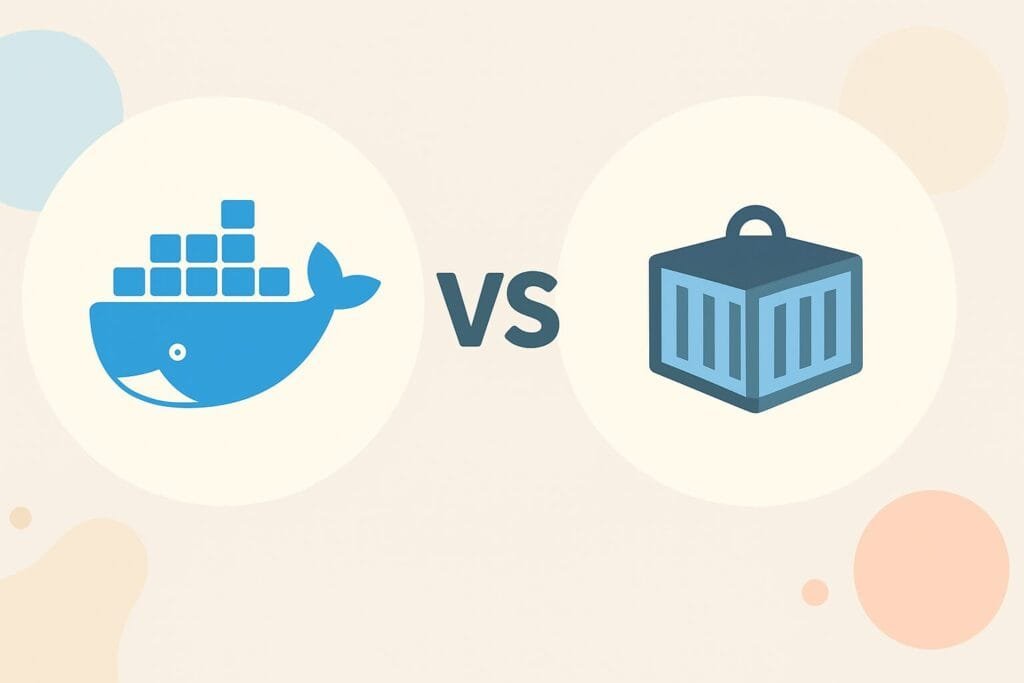In the world of containerization, two tools stand out as leading options: Docker and Podman. Both are widely used by developers and system administrators to create, deploy, and manage containers. However, the question remains: Docker vs Podman – which container tool is more popular, and which one should you choose?
Before answering that, let’s dive into what makes these tools unique, their similarities, their differences, and the popularity trends around them. By the end of this article, you’ll have a clear idea of which tool might best suit your development or production environment.
What is Docker?
Docker is one of the most popular container platforms, first introduced in 2013. It simplifies the process of creating, deploying, and managing applications inside containers. With Docker, developers can package applications with all required dependencies into portable images. This has revolutionized DevOps practices, allowing for faster development cycles and seamless deployment across environments.

What is Podman?
Podman is a container engine developed by Red Hat, designed as an alternative to Docker. Unlike Docker, Podman does not require a daemon to run, and it offers a daemonless architecture. This makes it more secure in certain scenarios. Podman also has a Docker-compatible command line interface (CLI), so many Docker users can switch without major disruptions.
Key Similarities Between Docker and Podman
- Both use OCI (Open Container Initiative) standards for image creation and running containers.
- Both allow container management using command-line interfaces.
- Both integrate well with Kubernetes for orchestration.
- Both support container images from registries like Docker Hub or Quay.io.
Docker vs Podman: Core Differences
While they serve similar purposes, there are crucial differences between Docker and Podman. Below is a comparison table highlighting the most important aspects:
| Feature | Docker | Podman |
|---|---|---|
| Architecture | Daemon-based | Daemonless (no background process) |
| Root Privileges | Typically requires root | Supports rootless mode for better security |
| Compatibility | Well established, widely used | Docker-compatible CLI |
| Kubernetes Integration | Docker was used natively but now replaced by CRI-O/containerd | Works natively with Kubernetes via CRI-O |
| Community & Ecosystem | Massive global adoption | Growing but smaller community |
| Learning Curve | Beginner-friendly with lots of documentation | Slightly more complex but Docker users can adapt quickly |
Which is More Popular?
In terms of popularity, Docker clearly leads the container market. It has become the industry standard, with millions of developers and enterprises using it worldwide. According to Stack Overflow Developer Surveys, Docker consistently ranks as one of the most loved and widely used developer tools.
Podman, on the other hand, has gained significant traction in enterprise environments, especially within organizations that prioritize security and prefer rootless container execution. However, Docker’s ecosystem, integrations, and community support still make it the more popular choice overall.
When Should You Use Docker?
You should consider Docker if:
- You are new to containerization and want an easy-to-learn tool.
- Your project relies on a massive ecosystem of images and integrations.
- You need quick access to a large support community and documentation.
When Should You Use Podman?
You should consider Podman if:
- You are working in a security-sensitive environment that requires rootless containers.
- You want to avoid relying on a daemon process.
- You are deploying in Red Hat or Kubernetes-native infrastructure (CRI-O based).
Final Thoughts
When comparing Docker vs Podman, the choice often depends on your specific use case. Docker dominates in popularity due to its massive adoption, ease of use, and rich ecosystem. Podman, while less popular, shines in security and daemonless architecture, making it attractive for enterprises and advanced users.
Ultimately, if you want the most popular, beginner-friendly, and widely supported option, go with Docker. If you want enhanced security and modern Kubernetes integration, give Podman a try.
Whichever you choose, both tools empower developers and DevOps teams to build scalable, portable, and efficient applications in today’s cloud-native world.

